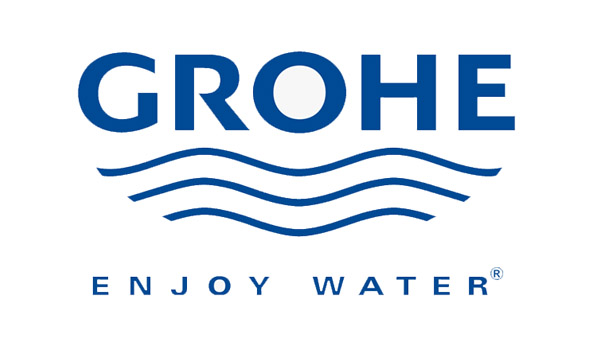Understanding the Importance of Bathroom Waterproofing
Bathroom waterproofing is a crucial aspect of home construction and renovation, primarily due to the unique challenges posed by moisture in these spaces. The primary function of a bathroom is to facilitate personal hygiene, which inherently involves high water usage. Consequently, without adequate waterproofing measures, the risk of water damage increases significantly, potentially leading to various issues such as mold growth, structural deterioration, and health hazards.
COVERING LONDON & SURREY
Bathroom Waterproofing
Mold thrives in damp environments, making bathrooms particularly susceptible to infestations. Active mold growth can not only damage materials like drywall and flooring but also pose serious health risks, particularly to individuals with respiratory conditions or allergies. Furthermore, persistent moisture problems can lead to significant structural damage over time. Water can seep into the walls and foundation, compromising the integrity of the home and leading to expensive repairs. Consequently, proactive waterproofing during the renovation or construction phase can mitigate these risks effectively.
Addressing bathroom waterproofing early in the design process is essential. It enables homeowners and builders to incorporate effective strategies and materials tailored to the specific conditions of the bathroom. Investing in high-quality waterproofing solutions can yield substantial long-term cost savings by preventing costly repairs associated with water damage. Moreover, a well-waterproofed bathroom enhances property value, an important consideration for any homeowner. Buyers are increasingly aware of moisture issues and often prioritize properties that demonstrate effective waterproofing solutions.
In summary, understanding the importance of bathroom waterproofing is vital for protecting not only the structure of the home but also the health and well-being of its occupants. By addressing waterproofing needs comprehensively during construction or renovation, homeowners can safeguard their investments and ensure a healthier living environment.
Different Waterproofing Methods for Bathrooms
Bathroom Waterproofing is a critical component in maintaining the integrity and longevity of any bathroom. Several methods are available for effectively waterproofing this essential space, each with its own advantages and drawbacks. One commonly used technique is the application of waterproof membranes. These sheets, available in both peel-and-stick forms and liquid applications, create a barrier against water ingress. Membranes are ideal for areas where high moisture levels are present, such as behind tiles in a shower. However, installing membranes may require professional assistance for optimal results, due to their complexity.
Another approach involves the use of waterproof paints, specifically designed for high-humidity environments. These paints can be applied directly to walls and ceilings, providing a seamless and attractive finish. While waterproof paint offers ease of application and can be a cost-effective solution for minor moisture concerns, it is not always suitable for areas subjected to frequent water exposure, such as floors or shower walls.
Sealants also play a vital role in bathroom waterproofing. They can be used to fill gaps and joints where moisture might infiltrate, such as around sinks, tubs, and showers. Silicone and polyurethane sealants are popular choices due to their flexibility and durability. The main downside is that sealants may need periodic reapplication, especially in high-use areas where wear and tear is more pronounced.
Cementitious coatings offer another level of protection, consisting of a mixture that can be troweled onto surfaces to create a waterproof barrier. These coatings are particularly effective for floors and walls in wet environments. However, their application can be labor-intensive and may require professional contractors to ensure proper installation.
When deciding whether to undertake waterproofing as a DIY project or to enlist professional services, evaluating the specific requirements of your bathroom is essential. Measures taken to accurately assess your needs will lead to better decisions that ensure long-lasting protection against water damage.
How to Properly Waterproof a Bathroom: A Step-by-Step Guide
Waterproofing a bathroom is a crucial process that protects your space from potential water damage, mold growth, and structural issues. To effectively waterproof your bathroom, follow these well-defined steps:
First, prepare the area by removing all fixtures, such as sinks, toilets, and bathtubs. This ensures an unobstructed workspace. Next, thoroughly clean the surfaces to be waterproofed, free from dust, grease, and old adhesives. This step is essential, as any contaminants could compromise the adhesive quality of the waterproofing materials.
Once you have a clean surface, assess your tools and materials. You will require waterproof membranes or sealants, a brush or roller for application, utility knives for cutting membranes, and waterproof tape. Depending on your bathroom design, consider purchasing additional materials like a drainage mat or a shower pan for comprehensive waterproofing.
Now, start the waterproofing process. If using a liquid waterproofing membrane, pour the product into a paint tray and apply it generously with a roller to the walls and floor. Ensure to cover all seams and corners, applying additional coats as per manufacturer instructions, typically requiring 2–3 coats for optimal protection. If you choose a sheet membrane, carefully measure and cut it to fit your shower space. When applying it, overlap seams and seal them with waterproof tape to create a watertight barrier.
Pay attention to drainage and ventilation. Install or enhance drains in sensitive areas, especially around showers and bathtubs, to prevent water pooling. Ensure adequate ventilation by installing exhaust fans and operable windows, which can help reduce moisture levels that lead to mold growth.
Finally, allow adequate drying time for all products used before reinstalling fixtures. This ensures thorough curing and enhances the longevity of the waterproofing measures you’ve put in place. Following these steps will contribute significantly to a well-protected bathroom against potential water damage.
Maintenance and Troubleshooting Bathroom Waterproofing Issues
Maintaining a waterproofed bathroom is essential for prolonging its effectiveness and ensuring your space remains protected against water damage. Regular inspections should be scheduled to identify early signs of potential waterproofing failures. It is advisable to examine the seals around fixtures such as bathtubs, sinks, and toilets. Check areas where tiles meet, as these are common points where moisture can seep through if not adequately sealed.
Another crucial step involves inspecting the walls, floors, and corners for any discoloration, warping, or bubbling paint, as these are indicative of moisture accumulation behind surfaces. Additionally, be vigilant about looking for mold or mildew, which thrive in damp conditions. Should you notice any of these issues, it is imperative to address them promptly to prevent further damage. Proper ventilation plays a vital role in maintaining a waterproof bathroom. Ensure that exhaust fans operate effectively, particularly after showers or baths, to minimize moisture in the air. Furthermore, resolving any plumbing leaks as soon as they are detected will help ensure that water does not compromise your waterproofing barriers.
If water damage occurs despite precautionary measures, consider employing a professional to assess the situation. Qualified contractors possess the expertise to conduct thorough evaluations of possible waterproofing failures. They often use advanced techniques and tools to identify hidden leaks that may not be visible to the untrained eye. In conclusion, regular maintenance, vigilant inspections, and early intervention play essential roles in tackling waterproofing issues. By staying proactive and informed, homeowners can significantly extend the lifespan of their waterproofing efforts and maintain a secure, damage-free bathroom environment.
Boosting Daily Comfort and Efficiency
A well-designed bathroom in London & Surrey is fundamental to enhancing daily comfort and efficiency. The layout, storage solutions, and use of space-saving fixtures play a critical role in transforming this often-overlooked space into a functional and pleasurable environment.







